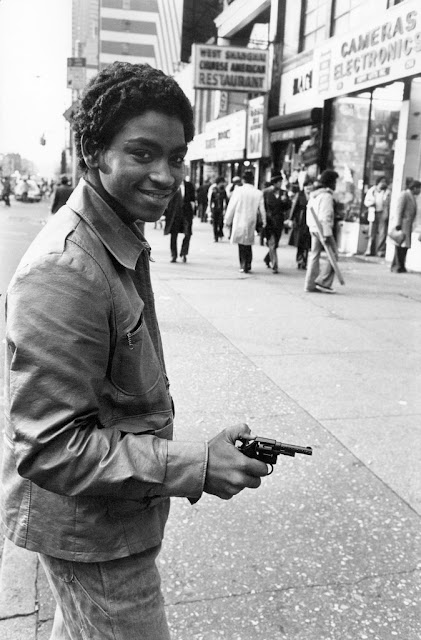Kenneth Siegel (1949-1994) was introduced to photography as a young boy by his uncle, Cornell Capa, a photographer and the founder of the International Center of Photography in New York City. After completing a Bachelor's degree at the Rochester Institute of Technology, Siegel worked for many years as a film editor at New York's Channel 9 before becoming a full-time freelance photographer. During his career as a photographer, Siegel worked for a number of important clients including the Democratic National Committee, the New York Times, St. Luke's Roosevelt Hospital, Prep for Prep, and the Visiting Nurse Service of New York.
Rarely without a camera around his neck, Siegel delighted most in photographing people -- particularly the people of his beloved New York City. His largest body of work documented the places and faces of New York's Times Square and Central Park in the mid-1960s through the early 1980s, a period when New York was both politically charged and culturally diverse. Many of Siegel's photographs from this period feature gatherings of young activists on the streets of New York and in Central Park, protesting the war in Vietnam, advocating for women and worker's rights, and freedom of lifestyle. The images taken in or around Times Square vividly depict the pre-gentrified area as a seedy melange of pornographic movie house marquees, small stores, restaurants, and sex shops populated by colorful habitues sporting tattoos, offbeat clothing, and street-wise expressions.
Siegel, however, approached his subjects with a certain camaraderie and a sense of identification that lets the viewer know he was not a voyeur, but rather among people he thought of as friends. "Most of the portraits are of people I know, usually by street name," Siegel explained. "They all knew me or knew of me often asked me to take their portrait. I could not have made these images without their cooperation. They express their need for recognition and I graciously oblige them."
(Photos by Kenneth Siegel)
Rarely without a camera around his neck, Siegel delighted most in photographing people -- particularly the people of his beloved New York City. His largest body of work documented the places and faces of New York's Times Square and Central Park in the mid-1960s through the early 1980s, a period when New York was both politically charged and culturally diverse. Many of Siegel's photographs from this period feature gatherings of young activists on the streets of New York and in Central Park, protesting the war in Vietnam, advocating for women and worker's rights, and freedom of lifestyle. The images taken in or around Times Square vividly depict the pre-gentrified area as a seedy melange of pornographic movie house marquees, small stores, restaurants, and sex shops populated by colorful habitues sporting tattoos, offbeat clothing, and street-wise expressions.
Siegel, however, approached his subjects with a certain camaraderie and a sense of identification that lets the viewer know he was not a voyeur, but rather among people he thought of as friends. "Most of the portraits are of people I know, usually by street name," Siegel explained. "They all knew me or knew of me often asked me to take their portrait. I could not have made these images without their cooperation. They express their need for recognition and I graciously oblige them."
(Photos by Kenneth Siegel)

























.jpg)

So cute!
ReplyDelete